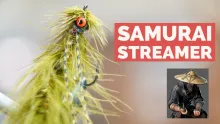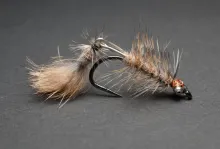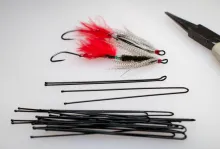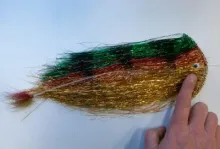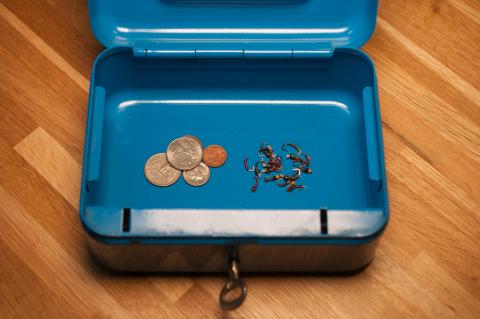This articulated fly tied by Danish Sune Andersen was inspired by the European water vole
The history
So much of fly fishing for (sea) trout in my area focuses on using tiny flies that resemble all kinds of insects or bait fish (like Frede and Magnus for sea trout).
However, sometimes it pays to go big when fly fishing for trout and pike, especially when you want to catch big fish.
There’s just something special about watching pike hunt in the surface, going after frogs and mice.
One day I observed a spin fisher using a rat made of plastic (Savage Gear 3D Rad Rat) on the stream.
After we had small-talked for some hours he got a bite from a 5 kilo pike.
On my way home I asked myself: how to can I fish something the same size on a fly rod?
After some research I found a model in a European water vole (Arvicola amphibius)
Funny side note
Under the cover of nighttime darkness one of my fishing buddies almost got an owl on his Morrish Mouse fly many years ago on a small stream in New Zealand.
Our fishing guide told us it was a Morepork (Ninox novaeseelandiae).
The foam popper heads sometimes come as one piece. If so, start by cutting it in half.
Please note: Wine corks can be a more environmentally friendly – and cheaper – choice.
Make a cut in what will become the bottom of the fly for fitting the hook and the non lead wire.
The foam has to fit the hook and you need room for a small lead free wire keel, which goes in after your have fitted the hook with super glue. The keel will function as the keel on a boat and make your fly swim upright.
Covering the hook shank with thread will make for a better connection between the hook and the popper head.
Tie the zonker strip tightly to the rear part of the hook shank protruding behind the popper head. Leave some extra strip behind the hook to form a tail.
Time to put some superglue on the outside of the popper head or cork and wrap the zonker strips.
Wrap the Zonker strip and on top of that wrap your thread to keep it all in place.
I cut my own zonker strips from a tanned rabbit skin – but you can use zonker strips from a fly shop you are not into cutting your own.
Please note the long tail in the clip on my vise. That will make the fly more alive then it’s in the water.
Mount the shank on the hook and turn it and firmly secure it by the front eye in the vise, leaving space for the popper head to slip on.
Cover it with open turns of thread like the hook shank.
Glue the slotted head and the lead free wire onto the shank in the same manner as the rear hook section.
Again glue and wrap the zonker strip, this time without a tail.
You can see here that I have wrapped the thread on the shank before I glued on the popper head.
After it has dried for 5-10 minutes it’s time to form a head. Feel free to make ears and legs!
For this I use nail polish, but any water resistant varnish can do it. I also sometimes use glow-in-the-dark UV resin.
Glue the Easy Shrimp Eyes on – glow-in-the-dark or red is really cool!
Your fly is now done and almost ready to fish. Let it fully dry for a day or two.
The fishing
Do NOT use this fly on a light fly rod. It gets very heavy when it’s wet!
I use this on my two hand Loop class 8 or on a 7’ ultra light spinning rod.
Think about the way a rodent like a mouse or a rat swims in the water. It is steadily kicking it's legs across the surface (like a dog swimming). That is the same motion you want to achieve with your fly.
Cast the fly upstream and near the lake or stream bank. Rodents do not cross deep water if they can avoid it.
The best way to do this is to move the rod tip back and forth in a wiggling motion as you slowly retrieve the line. Also you want to avoid is make unnatural movements. Keep in mind the right retrieve creates vibrations in the water. A pike will identify your fly as a prey animal and ambush.
Extra
I have the same version of the fly in a shadowbox on my wall.
References
Water voles:
In Danish streams: www.kongeaastien.dk/en/content/european-water-vole
Pike:
www.gwct.org.uk/wildlife/species-of-the-month/2019/pike/
en.wikipedia.org/wiki/Northern_pike
Also read the article on mouse flies here.
- Log in to post comments













